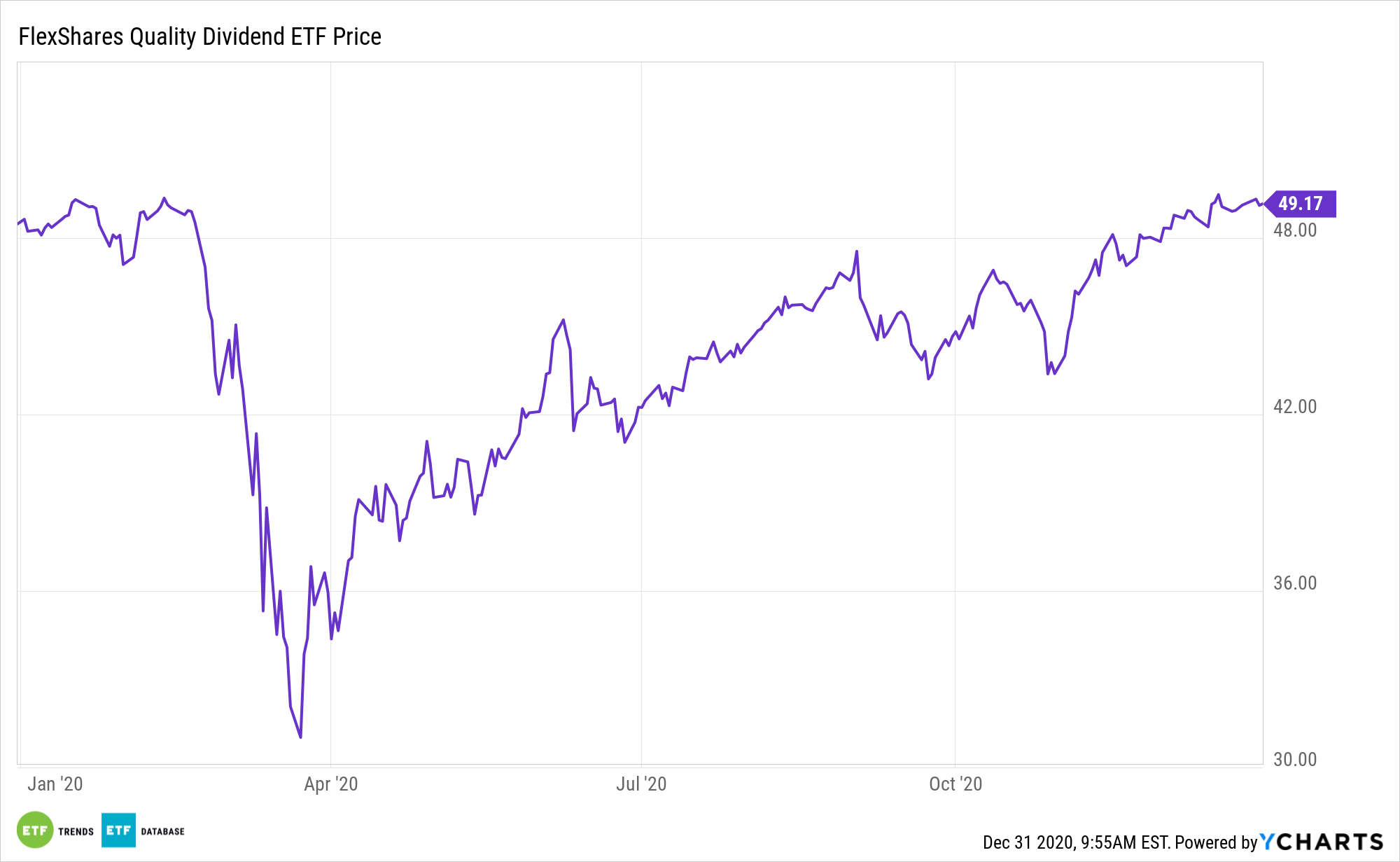There’s no getting around the fact that the first half of 2020 was rough on dividend stocks and related exchange traded funds, but data suggest the year wasn’t a total wash for that strategy. After all, the FlexShares Quality Dividend Index Fund (NYSEArca: QDF) is on pace for double-digit gains in the fourth quarter.
QDF’s underlying benchmark targets management efficiency or quantitative evaluation of a firm’s deployment of capital and its financing decisions. By using a management efficiency screen, the index can screen out firms that aggressively pursue capital expenditures and additional financing, which typically lose flexibility in both advantageous and challenging partitions of the market cycle.
Perhaps surprisingly, S&P 500 dividend payments actually hit record highs on an annual basis in 2020.
“Dividend payments to investors in the S&P 500 rose to a new record in 2020, up 0.7% to $58.28 per share from the previous record set in 2019, according to research from S&P Global,” reports Reuters.
QDF Is In Prime Position to Rally Next Year
QDF emphasizes the quality factor, of which a company’s ability to generate free cash and dividend growth and stability are integral tenants. Another element that has been critical to QDF’s success is its emphasis on management efficiency and a company’s ability to generate cash.
“A record dividend payment in the first quarter of 2020, and a stronger than expected payment in the fourth quarter led to record payouts to investors, the ninth straight annual record, according to research from Howard Silverblatt, senior index analysts for S&P and Dow Jones indices,” reports Reuters.
QDF’s value lean could bolster the fund in 2021. Not all dividend stocks are value plays and not all value stocks are dividend payers, but there are often intersections between the two concepts, meaning the recent value rebound is good news for dividend investors.

Exposure to the value factor could be in play following rotation away from high growth that has outperformed this year to cheaper cyclical sectors. Value stocks tend to trade at a lower price relative to their fundamentals (including dividends, earnings, and sales).
While they generally have solid fundamentals, value stocks may have lost popularity in the market and are considered bargain-priced compared with their competitors. Value fans believe this time may be different for value stocks, pointing to improving investment sentiment measures, abating fears of a recession, rebounding corporate profits, and lessening trade tensions between the U.S. and China. Furthermore, value stocks are now trading at some of their most attractive prices in years as the growth/value gap is as wide as it’s been in decades.
For more on multi-asset strategies, visit our Multi-Asset Channel.
The opinions and forecasts expressed herein are solely those of Tom Lydon, and may not actually come to pass. Information on this site should not be used or construed as an offer to sell, a solicitation of an offer to buy, or a recommendation for any product.

